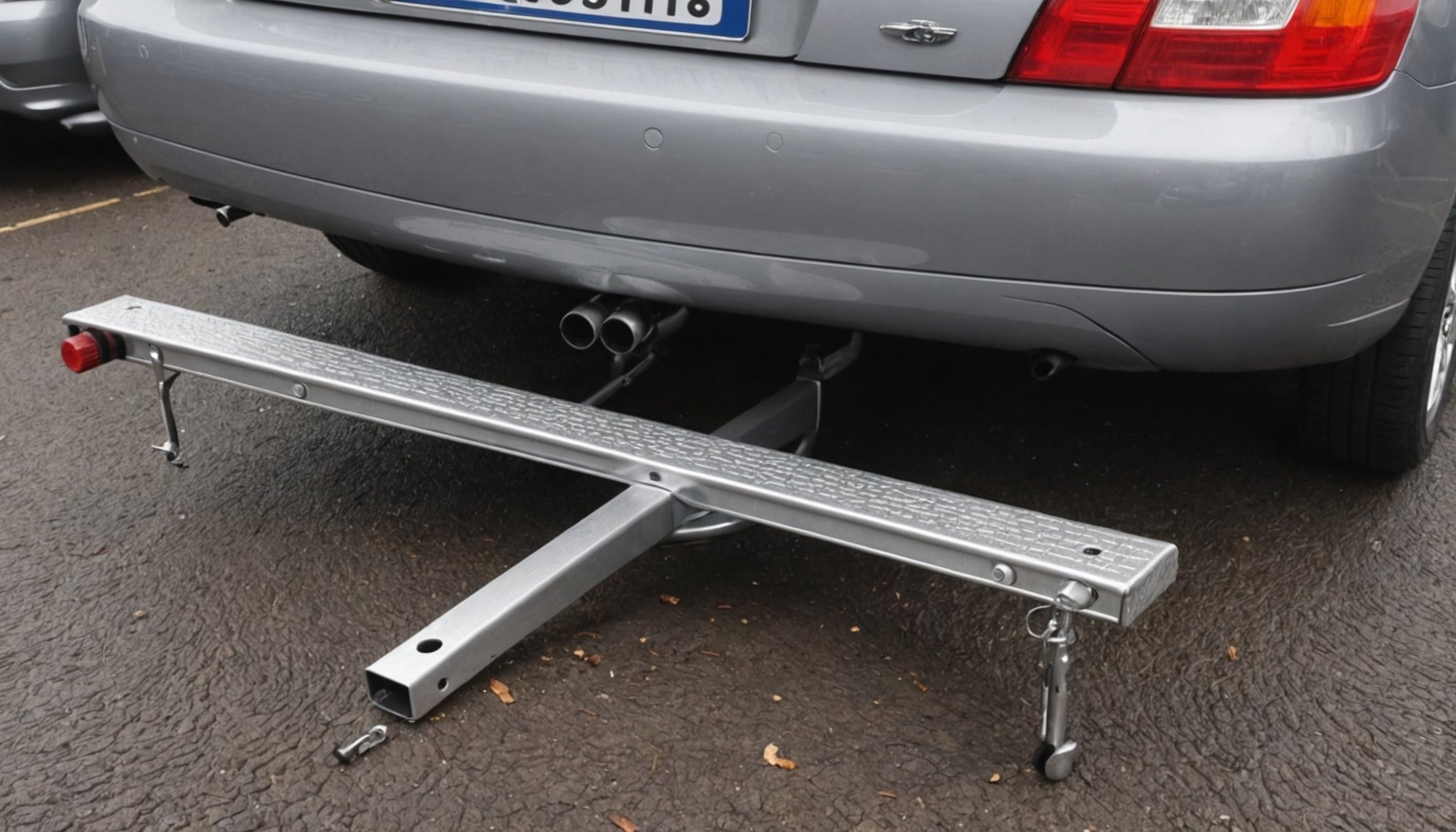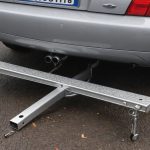Overview of Trailer Hitch Installation on British Estate Cars
Installing a trailer hitch on British estate cars comes with significant importance due to its range of benefits. Proper installation ensures the hitch’s durability and the vehicle’s safety during towing. A well-installed hitch expands the vehicle’s utility, making it versatile for transporting trailers, bike racks, or cargo carriers.
Commonly, trailer hitches enhance the functionality of estate cars, providing a reliable method to tow trailers for camping, utility tasks, or even moving house. The installation process requires a basic set of tools and materials, including wrenches, drills, and mounting brackets, to ensure precision and stability.
In parallel : Uncover top-rated wind deflectors for your british convertible: boost your aerodynamics today!
Correct installation is paramount for safety; it prevents mishaps while driving. Misalignment or loose components can lead to accidents or cause damage to both the vehicle and the trailer. Regular checks and maintenance also contribute to prolonged hitch lifespan and secure transport capabilities.
In essence, understanding and executing the trailer hitch installation on your British estate car correctly is essential, providing convenience and expanding the car’s functionality for everyday needs and unexpected adventures alike.
In parallel : Revitalize your british compact car”s audio experience: a comprehensive guide to achieving outstanding sound quality
Understanding Different Hitch Types Compatible with British Estate Cars
British estate cars require specific compatible trailer hitch types to ensure safe and effective towing. There are various hitch variations to consider, each designed to meet different needs and vehicle specifications.
Description of Hitch Types and Compatibility
The most common hitches include:
- Receiver Hitches: Ideal for general use, suitable for light to heavy towing depending on their class.
- Gooseneck Hitches: Primarily for larger towing loads, often seen in commercial or heavy-duty applications.
- Weight Distribution Hitches: These provide enhanced stability by distributing the tongue weight across the vehicle’s axles.
Recommendations and Considerations
For smaller estate cars, a receiver hitch often suffices. Larger models can accommodate more robust options like the gooseneck. Important factors to consider include the vehicle’s towing capacity, the load’s weight, and existing installation points. Prioritising these factors ensures choosing the right hitch for your specific estate car model.
Selecting the appropriate hitch is essential to avoid overloading the vehicle and ensuring safe towing. By understanding these details, car owners can make informed decisions and enhance their vehicle’s utility effectively.
Essential Tools and Equipment for Hitch Installation
To ensure a successful trailer hitch installation, it’s crucial to have the right tools at your disposal. A comprehensive installation toolkit generally includes:
- Wrenches: Essential for tightening and securing bolts.
- Drills: Used for creating precise holes for mounting.
- Mounting Brackets: Key components for stable hitch attachment.
Additionally, consider specialized tools that cater to the unique designs of British estate cars. These might include specific wrenches or socket sizes that are compatible with the car’s factory specifications.
The role of safety gear cannot be overstated during installation. Items such as safety goggles, gloves, and even steel-toed boots can prevent injuries from debris or tool slips. Furthermore, using a reliable jack or car lift ensures the vehicle is stable, allowing you safe access to the undercarriage.
An organised and complete installation toolkit not only simplifies the process but also enhances safety, ensuring the hitch is properly secured without compromising on stability or reliability. Having these tools ready before beginning the installation can make the entire process smoother and more efficient.
Step-by-Step Installation Instructions
Correctly installing a trailer hitch on a British estate car is crucial for safe and effective towing. To achieve a precise trailer hitch setup, follow these detailed steps.
Preparing the Vehicle for Installation
Begin by preparing the vehicle. Conduct thorough safety checks, ensuring stability before installation. Measurements are necessary for accurate hitch alignment, so check the installation area for existing holes or obstructions. To secure the vehicle, use quality support such as a jack stand.
Installing the Trailer Hitch
Next, attach the hitch frame carefully. Secure it using bolts and ensure alignment by cross-referencing with the trailer hitch guide. Drilling might be needed; use a drill appropriately sized for your vehicle. If a wiring harness is required, connect it according to the manufacturer’s specifications to ensure proper functionality.
Final Adjustments and Checks
After installation, it’s vital to double-check bolt security and alignment. Confirm there is sufficient clearance between the hitch and vehicle. Post-installation safety involves regular routine checks to maintain hitch integrity and vehicle safety. Consider recommending routine maintenance for longevity and reliability.
Troubleshooting Common Installation Issues
Installation troubleshooting for trailer hitches on British estate cars involves identifying potential common issues and errors that might arise during setup. Hitch installation problems such as misalignment of the hitch can lead to ineffective towing and pose serious safety concerns. If you’ve noticed that the hitch does not sit correctly against the car chassis, re-evaluate your measurement steps and ensure the hitch is centred and level.
Dealing with alignment issues requires patience and precision. Start by loosening the bolts slightly, align the hitch properly, and then retighten to ensure stability. Adjusting the hitch after installation might also involve altering the position of mounting brackets to guarantee even weight distribution across your vehicle.
If the hitch does not seem to fit well with your car’s design, double-check that the correct hitch class was chosen for your specific vehicle model. Identifying these problems early and implementing adjustments after installation ensures the effective performance of the trailer hitch while maintaining vehicle safety. Understanding these troubleshooting steps can help prevent damage to both the car and trailer during towing activities.
Safety Precautions During Installation
Safety during installation is critical, particularly when installing a trailer hitch on British estate cars. Improper handling or oversight can lead to accidents and potential injury. Ensuring a safe environment starts with using recommended safety gear: wear gloves to protect your hands, safety goggles to shield your eyes from debris, and steel-toed boots to avoid foot injuries.
Installation involves working beneath a vehicle, heightening the risk of accidents. Using a secure jack or car lift is essential to stabilise the car, preventing it from collapsing unexpectedly. It’s advisable to have a helper present during the installation process. A second person can provide additional support, pass tools, or assist in holding parts in place, making the task more manageable and reducing risk.
Adopting cautious practices, such as double-checking each step, ensures that both the installer and the vehicle are protected. By prioritising safe practices, you safeguard not only the vehicle but also yourself against unforeseen mishaps and injuries. Always remain vigilant about potential hazards, and prepare adequately before beginning any installation.
Maintenance and Care for Your Trailer Hitch
Ensuring the longevity of your trailer hitch involves consistent hitch maintenance and regular inspection routines. Regular checks help identify potential wear and damage early, preventing unexpected failures during towing. Inspect the hitch for signs of rust, corrosion, or physical damage, which can compromise its strength and reliability.
Cleaning your hitch is crucial to prevent rust and maintain its structural integrity. Use a wire brush to remove dirt and rust, followed by an application of rust-resistant spray. This promotes trailer hitch care, keeping its components functional and safe for use. Regular lubrication of moving parts also aids in preventing unsteady connections and prolongs hitch life.
In cases where significant issues arise, such as excessive rust or structural deformities, it’s prudent to seek professional help. Professionals can provide a more in-depth assessment, repair, or hitch servicing. Engaging experts ensures comprehensive care, maintaining both the hitch and the vehicle’s safety during towing tasks.
Adopting a consistent care routine ensures your hitch remains safe, efficient, and reliable for all towing needs, offering peace of mind and enhancing your British estate car’s utility over time.






